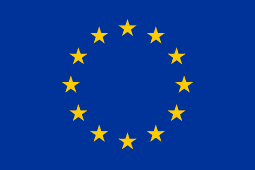What are sustainable fisheries and why we need them?
Sustainable fisheries are those where the fish population does not reduce over time due to destructive or illegal fishing practices. Sustainable fishing guarantees there will be populations of ocean and freshwater wildlife for the future.
Fisheries and aquaculture are a source of livelihood for over 500 million people globally. At least 32% of the world's fisheries are overexploited, depleted or recovering, which threatens the health, economy, and livelihoods of communities all over the world.
What are the main threats to marine biodiversity?
Overfishing
The global fishing fleet is almost 3 times larger than necessary to catch what the ocean can sustainably produce. This results in depletion of fish populations to levels from where they cannot recover.
Inadequate conservation and management
The ocean may be vast but its resources are not infinite. Overfishing not only causes depletion in individual fish stocks, but also disruption to entire marine ecosystems. Management of these ecosystems is crucial and entails:
- Maintaining populations of target species to enable their natural role in ecosystems.
- Eliminating the use of fishing gear that creates a high level of bycatch
- Protecting feeding, breeding and spawning grounds of vulnerable species.
Habitat loss as a result of harmful fishing practices
Eliminating destructive fishing practices is essential to sustainable fishing. Deep-sea trawling strips the entire environment of all living things including deep ocean corals. Other indiscriminate fishing practices such as drift nets, long-lining, and cyanide fishing are also destructive to underwater habitats.
Government subsidies
Governments provide subsidies to fisheries to enable them to increase the catching capacity of their fleets. These subsidies are intended to support the fishing industry however they do more harm than good with the increased capacity causing the overexploitation of commercial fish stocks and increasing the amount of waste due to bycatch.
Why sustainable fishing?
Sustainable fishing is a more artisanal and small-scale method with social, economic and environmental benefits. It…
Respects marine ecosystems
Sustainable fishing protects marine fauna and adapts to the reproductive rate of fish to ensure the survival of all species.
Uses selective methods
It rejects the indiscriminate capture of fry, endangered species or those without commercial value.
Prevents waste
In sustainable fishing, the bycatch is used to make fishmeal to minimise food waste.
Aids food security
Sustainable small-scale fisheries account for 66% of all catches meant for human consumption.
Creates jobs
It provides employment for 90% of the global fishing industry and helps develop and sustain small fishing communities.
Reduces pollution
Sustainable fishing minimises energy consumption and reduces the use of chemicals harmful to the environment.
The opposite of sustainable fishing is the so-called destructive fishing. It uses aggressive methods such as trawling, makes indiscriminate catches and prioritises profit over environmental protection.
Fun fact: According to the Food and Agriculture Organization USA, these nations capture the most fish:
- China
- Peru
- Indonesia
- United States
- India
Fun fact: Factory ships are fishing vessels designed to catch tremendous amounts of fish. These ships stay at sea for long periods of time, and are equipped with technology that fillets and freezes the fish immediately after they are caught. One factory ship can process a hundred tons of fish in a single hour.
--
References
- https://www.sciencedirect.com/topics/earth-and-planetary-sciences/sustainable-fishery
- https://www.marinebio.org/conservation/sustainable-fisheries/
- https://www.getculturedkitchen.com/sustainable-fishing-techniques/
- https://oceanconservancy.org/sustainable-fisheries/
- https://education.nationalgeographic.org/resource/sustainable-fishing
- National Geographic Channel: Wicked Tuna—The Global Fish Crisis
- National Geographic Ocean: Seafood Quiz
- National Geographic Environment: The Ocean—The Impact of Seafood







